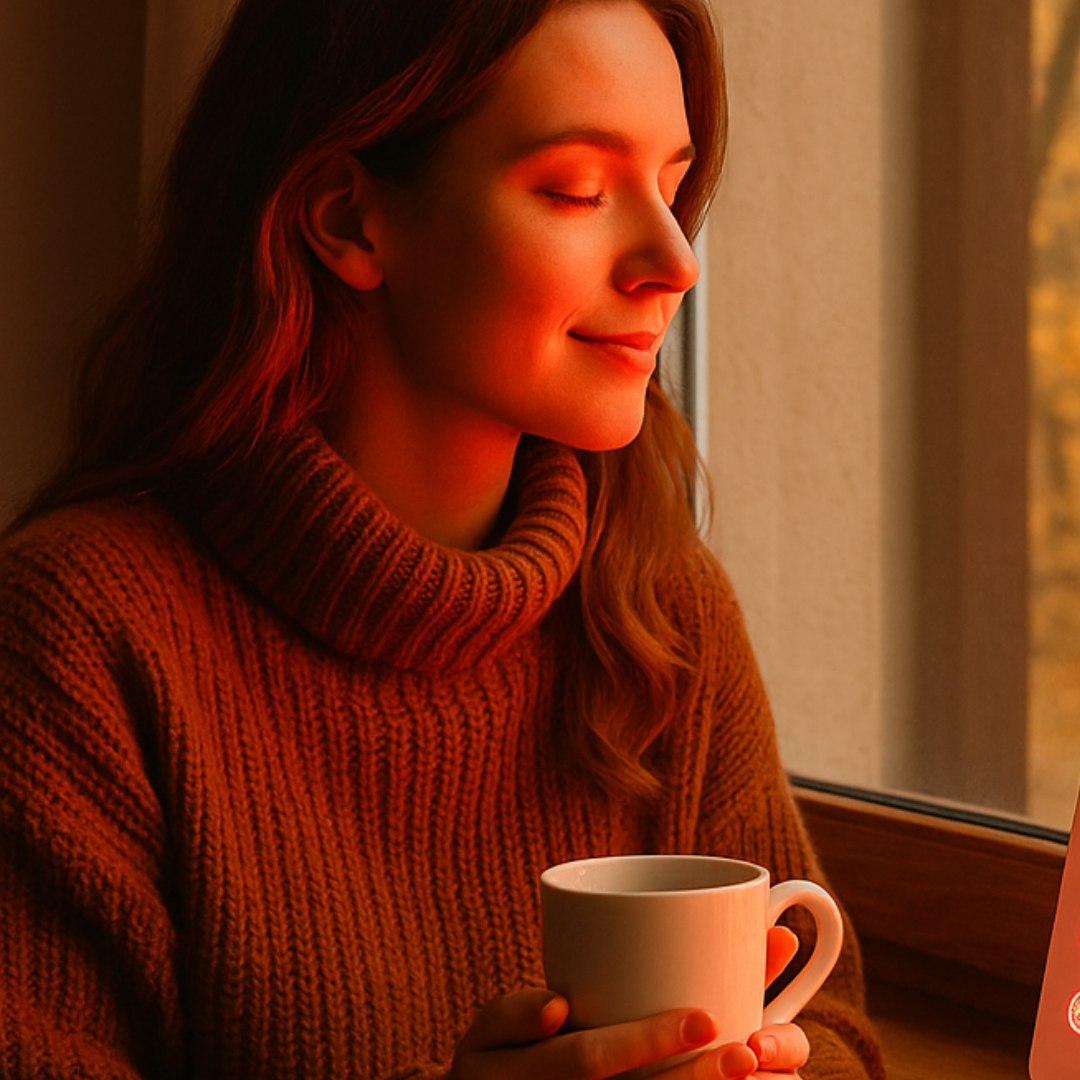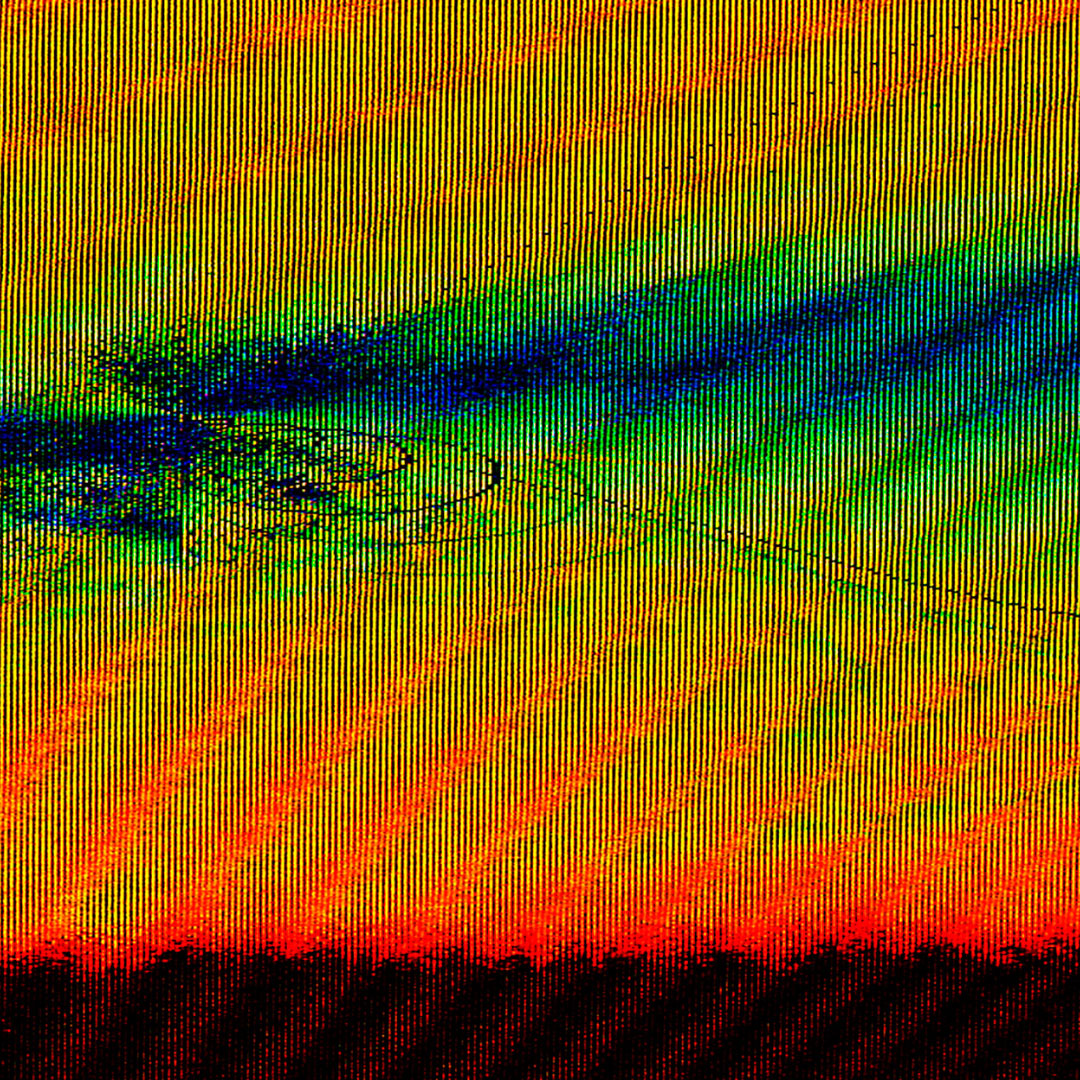Autumn Wellbeing with Light Therapy
Shorter days, cooler weather, and more time indoors can dampen motivation and mood. As natural daylight decreases, our circadian rhythm may drift, sleep can feel less restorative, and everyday energy dips become more common. Red and near-infrared light offer a gentle, science-informed way to support balance through the season—helping you keep focus, steadiness, and daily momentum.
Why autumn can be challenging
As daylight hours shrink, the body receives fewer bright-light cues that help set the internal clock. This can lead to:
-
Reduced morning alertness and mid-day energy slumps
-
Lower motivation and a more subdued mood
-
Sleep timing drift (harder to wind down or wake refreshed)
-
More time indoors and less movement, compounding fatigue
A simple, structured light routine can help re-anchor daily rhythms and support steadier energy through the darker months.
How does light therapy work?
Red and near-infrared wavelengths interact with cells through photobiomodulation (PBM). Photons are absorbed by cytochrome c oxidase in the mitochondria, supporting electron transport and increasing adenosine triphosphate (ATP)—the cell’s energy currency.
This cellular effect helps:
-
Promote relaxation and recovery by supporting parasympathetic (rest-and-digest) activity
-
Modulate inflammatory signals that can affect mood, motivation, and sleep quality
-
Improve local circulation and tissue oxygenation for a calming, restorative effect
Timing matters in autumn: evening use of low-blue, red/near-infrared light helps maintain a calmer environment aligned with the body’s circadian rhythm, while daytime bright light (e.g., natural daylight) reinforces alertness and a healthy sleep-wake cycle.
Autumn applications
By supporting cellular energy, circulation, and nervous-system balance, light therapy complements practical habits for steadier mood and motivation during the darker season.
Common autumn use cases include:
-
Morning rhythm reset
Brief exposure to bright light (ideally daylight) after waking, paired with a short red/NIR session, helps reinforce alertness and daily momentum. -
Evening wind-down
Red/NIR sessions 1–2 hours before bedtime create a low-blue, calming environment that supports smoother wind-down. -
Mid-day focus break
Short sessions can provide a restorative pause on low-energy afternoons, especially when outdoor light is limited. -
Stay-indoors support
For office or home days, structured light routines help counter reduced daylight, supporting balance and consistency.
Light therapy is non-invasive, gentle, and complementary; it pairs well with movement, fresh air, and mindful nutrition.
Key benefits at a glance
Well-timed light exposure and PBM can help the body feel settled, focused, and resilient throughout autumn.
Core benefits include:
-
Steadier mood & motivation
Supports autonomic balance and helps keep daily drive on track when daylight is scarce. -
Clearer daytime alertness
Reinforces the body clock for smoother mornings and less mid-day drift. -
Smoother wind-down
Encourages a calmer evening environment that supports rest and recovery. -
Comfort & recovery
Improved circulation and cellular energy can ease everyday tension and seasonal sluggishness. -
Gentle & non-invasive
No needles, no downtime, and easy to integrate into daily life.
Who can benefit?
Light therapy suits anyone looking to stabilize mood, maintain motivation, and support sleep during shorter days—from busy professionals to students, caregivers, and shift workers.
How to use it in practice
Morning: Seek natural daylight soon after waking (5–15 minutes), optionally followed by a brief red/NIR session to reinforce circadian timing and daytime energy.
Mid-day: A short red/NIR break can feel restorative on low-light days.
Evening: 10–20 minutes of red/near-infrared light, about 1–2 hours before bedtime, to support relaxation and wind-down.
Aim for 3–5 sessions per week for 4–8 weeks, then continue with a maintenance rhythm. Consistency matters more than intensity.
Why redtreat
redtreat devices are designed for clarity, comfort, and consistency—key to making autumn routines simple and sustainable:
-
Purposeful wavelengths & optical design to deliver effective red and near-infrared exposure for home or professional use.
-
Ease of use with intuitive controls and flexible setups—whether for a quick morning boost or a calming evening wind-down.
-
Built for daily rhythm so sessions are easy to repeat and integrate, even when daylight is limited.
Looking to anchor a simple autumn routine? Explore the redtreat range and choose the setup that fits your day.





